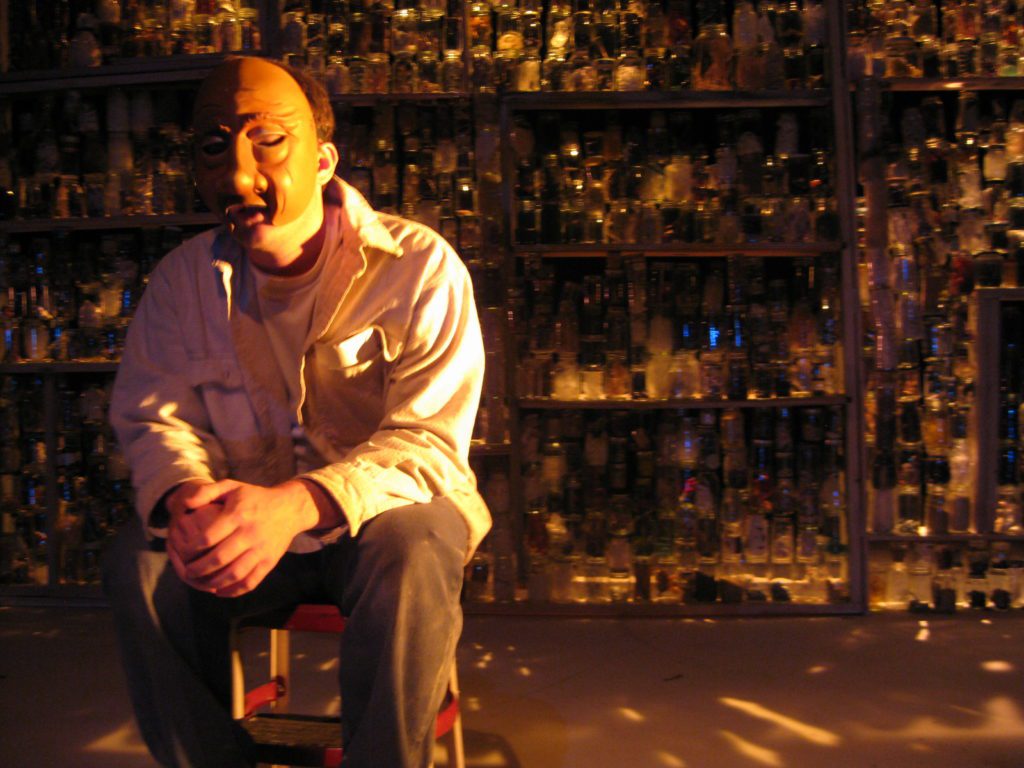Nobody gives a damn about the arts.
Too bad.
Likewise, unless it involves killings, multiple births, rich people, cults, meth labs or big boobs, nothing that happens between New York and L.A. matters.
Wrong.
Denver’s Buntport Theater opened its ninth season two weekends ago with their version of a novel, “Indiana, Indiana,” by Boulder writer Laird Hunt. What happens onstage is miraculous. I’ll tell you why.
First, a disclaimer. Usually, a reviewer is like a food taster. He or she checks out the product, chews it over, masticates it into a 500-words-or-less paste, regurgitates it. Signals whether it’s safe to consume or not.
This isn’t that. I’m a fan, a partisan, a booster. I’ve watched them for nine years, seen nearly all of their two-dozen-plus productions, and I’ve never had a negative experience. I’ve always been glad I attended.
Why is that important? It’s the definition of good art – something that not only entertains you, but sticks with you and expands your sensibilities. This is what Buntport does. As I’ve written many times before, for many different publications and websites, they are a group of six who work together as performers, designers, writers, technicians, ticket-takers, whatever needs to get done to make it happen. They are Brian Colonna, Hannah Duggan, Erik Edborg, Erin Rollman, SamAnTha Schmitz and Evan Weissman.
To this point, they’ve been focused primarily on comic extrapolations of classic texts, leading to hilarious results in works such as “Titus Andronicus! The Musical,” “Moby Dick Unread” and “Kafka on Ice.” (I mention the catchiest titles, to whet your appetite.)
This time, they’ve taken the work of a living writer and translated it onto the stage. It’s serious, but not somber. It provokes feeling, but it doesn’t make a play for your emotions. It is what it is, and it’s fascinating and delicious.
A blank white rectangle on the floor is the playing space, often overlaid with transparencies that move us through fields, onto roads, into the rain. This barren space is backed with a wall of glass jars, containing objects, memories, properties. The wall’s panels unhinge to make doorways, windows, hatches. A few pieces of furniture fly down, across or roll onto and off the set.
The story’s told without a break. It’s Noah’s story. He’s the only constant, played by Weissman, half-masked as an old man tumbling through his fragmented memories. He’s slow, or gifted, or both; a farm boy in the Midwest dominated by his brief experience of marriage to the similarly minded Opal, who’s taken from him.
The other players (Colonna, Duggan, Edborg) drift in and out around him, playing wife, mother, father, preacher, sheriff, townsfolk. Flashes from Noah’s mind, projections, fall onto blank surfaces periodically and play themselves out cryptically (Rollman and Schmitz work off stage this time).
So what is so miraculous about this? For all its fragmentation, “Indiana, Indiana” coheres. It’s fluid and eloquent, there’s no wasted movement to it, no moments of awkwardness. The years of work this group has done together gives them an unmatched ability to communicate clearly and deeply.
It’s not an adaptation into play form. No other group will ever be able to pick up and recreate what they do. That’s what makes “Indiana, Indiana” worth getting up and going to. When its run is done, you’ll never see it again. It will never move to Broadway. It will never be on TV.
Here’s a statement that can be found in every Buntport program: “At Buntport, we strongly believe that Denver is NOT a staging area on the way to ‘bigger’ and ‘better’ things. Wonderful, vibrant Art is happening right here and now! . . . We strive to provide a wide variety of high quality programming that cannot be found anywhere else.”
I don’t really know how they do it. I don’t think I want to penetrate that mystery. I’m happy they’re here. I will hijack their achievement to help make my own assertion that there are no more excuses for overlooking what good art can do for us, for ignoring anything of value that sprouts up outside the spotlight’s scope. Which is why I will keep on about them until they selling out every show.
When the lights came up and the bows were taken, the person next to me was too moved to get up. For a minute, too changed. That’s what good art does. That’s why you should see it.
-Brad Weismann, September 15, 2009, www.dscriber.com
